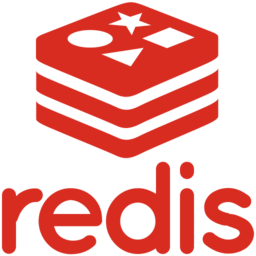Introduction to Redis: Understanding Common Use Cases and Basic Commands

Aug 2, 2023

What is Redis?
Redis (Remote Dictionary Server) is an open-source, in-memory data structure store that acts as a key-value database. It is often referred to as a data structure server because it supports various data structures such as strings, lists, sets, hashes, sorted sets, bitmaps, and more. Redis is designed for high-performance and low-latency data operations, making it ideal for a wide range of applications that require real-time data processing.
Common Use Cases for Redis
Redis can be applied to various scenarios, thanks to its speed, simplicity, and versatility. Some of the common use cases for Redis include:
-
Caching: One of the most popular use cases of Redis is caching frequently accessed data in memory. By storing data in Redis, developers can reduce the load on primary databases, leading to faster response times and better overall system performance.
-
Session Store: Redis is well-suited for session management in web applications. Storing session data in Redis allows for easy scaling of web servers, as session data can be accessed quickly and efficiently.
-
Real-Time Analytics: Redis’s data structures and fast data access make it an excellent choice for real-time analytics. You can store and process data related to user interactions, events, or metrics in Redis to get instant insights.
-
Leaderboards and Counting: Online games and applications often utilize Redis to maintain leaderboards and track counts (e.g., likes, views, votes) in real-time.
-
Message Broker: Redis’s pub/sub feature enables it to function as a message broker. It allows different parts of an application to communicate with each other in a scalable and real-time manner.
-
Geospatial Indexing: Redis supports geospatial data and allows developers to perform queries based on geographic locations, making it useful for location-based applications.
-
Rate Limiting: By using Redis’s atomic operations, developers can implement rate limiting functionality to control the rate of requests from specific clients.
Basic Commands Every Developer Must Know
Here are some of the fundamental Redis commands that developers should be familiar with:
-
SET: This command sets the value of a key in Redis.
SET key_name value -
GET: Used to retrieve the value associated with a key.his command sets the value of a key in Redis.
GET key_name -
DEL: Deletes a key and its associated value from Redis.
DEL key_name -
INCR and DECR: These commands increment or decrement the integer value of a key.
INCR key_name DECR key_name -
LPUSH and RPUSH: These commands push elements into a list from the left or right, respectively.
LPUSH list_name value1 value2 ... RPUSH list_name value1 value2 ... -
LLEN: Returns the length of a list.
LLEN list_name -
SADD and SMEMBERS: Used to add members to a set and retrieve all members of a set.
SADD set_name member1 member2 ... SMEMBERS set_name -
HSET and HGET: These commands set and retrieve field values in a hash.
HSET hash_name field_name value HGET hash_name field_name -
ZADD and ZRANGE: These commands add members to a sorted set and retrieve members within a specified range.
ZADD sorted_set_name score1 member1 score2 member2 ... ZRANGE sorted_set_name start_index end_index -
FLUSH and FLUSHALL: These commands remove all keys from the current database (FLUSH) or all databases (FLUSHALL).
FLUSH
FLUSHALL
Remember that both FLUSH and FLUSHALL are powerful commands that can delete all data from Redis, so use them with caution, especially in production environments.
Conclusion
Redis is a powerful and versatile data structure store that offers various use cases for developers. Whether you need caching, real-time analytics, message brokering, or other functionalities, Redis can provide a high-performance solution. Understanding the basic commands will help you get started with Redis and unlock its potential in your applications. Happy coding!